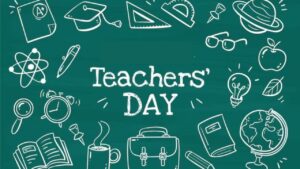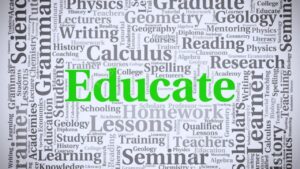Literature Review of Ministry of Education

The research review will consider topics related to our present research, such as school remoteness and emergency education strategies adopted by countries during the COVID-19 pandemic; ICT in the Ministry of Education in Palestine; and five dimensions of educational administration quality. According to Fidalgo and partners, it is thanks to the World Wide Web, which gives a global majority access to knowledge, that this happens. This facilitated the dissemination of educational materials that enabled distance education to transition into the digital age. It was the researchers who invented the concept of distance education who pointed out that the learning process occurs in an environment that includes teachers spread all over space and time. There is no requirement for you to attend some type of educational institution to receive an academic qualification or credential. The Ministry of Education for online and distance learners is also improving learners’ outcomes in learning, their capability of influencing learning, and the likelihood of metacognitive learning and motivation. It also influences their social life and identity. However, the fact that distance learning has positive effects does not go without saying. Parkinson and Co. found out that distance education can be advantageous to students who are outside the campus, but they also realized that in the traditional classroom on campus, students are more content with their level of education. After COVID-19, researchers are attracted to the concept of emergency education. Sofianidis et al. argue that the COVID-19 outbreak offered a rare chance to revolutionize digital education. But simultaneously, it revealed the weaknesses of the current educational arrangement.
Economic Commission

According to the figures from ECLAC-UNESCO, by mid-May 2020, there were over 1.2 billion students of all education levels who no longer could attend school physically. In ECLAC-UNESCO 5, the socio-economic situation in the region was already in decline even before the pandemic struck due to the rising poverty rates, the prevalence of social inequalities, and the growing frustration. All spheres of society, including the Ministry of Education, suffered under the impact of the current economic situation. In the case of Palestine and its current digital divide, this is true. As indicated by Schleicher, the digital divide is intensified in the emergency classroom, for the most favored students can pass through the closed doors at school and get other educational opportunities, while the unfortunate students are often left behind. In their research, the researchers looked at the education process of the students in Palestine in the context of an emergency in education. According to Shraim and Crompton, Palestinian instructors, as well as other decision-makers, viewed minds, along with social media, the cloud, and computing, as more than tools for creating and conveying educational materials and effective communication during the COVID-19 outbreak. Secondly, Shraim and Crompton stated different concerns, such as the broadening digital gap as well as the scorn for distance learning. According to ECLAC UNESCO 5, initiatives implemented by the ministries of education in Latin American and Caribbean countries incorporated several facets of online learning and teacher education. For instance, the Ministry of Education of Ecuador introduced a teacher’s course called “My Online Classroom,” where the module was based on the self-learning principle.
- Mandat: Economic Commissions are charged with facilitating cooperation and economic development in the designated ministry of education region.
- Formalization of Policy: They design economic strategies and policy frameworks to promote development, stability, and sustainable development. They do this in collaboration with the government and other actors.
- Research and Data: Perform economic research and analysis of regional tendencies and provide appropriate data for decision-making.
- Capacity Construction: Strengthen the economic capacity of the member countries by providing technological support through the exchange of good methods.
- Regional Integration: Foster cooperation and interdependence among the states of the region to form a sound and unified economic system in the region.
- Sustainable Development: Concentrates on the sustainable nature of development by balancing growth and the environment and society.
- Construction of Infrastructure: Invest in infrastructure projects such as communications, transport, and energy for the potential to create growth.
- Trade Facilitation: Remove trade barriers and establish an open and efficient regional market for trade.
- Financial Cooperation: provides cooperation in finance among state members, leading to their collaborative efforts on financial, monetary policy, bank, and fiscal matters.
- Monitoring and Evaluation: check periodically how development policies and economic initiatives affect the systems, measure performance in terms of progress towards the achievement of desired targets, and recommend changes when necessary.
ICT-Based Education

The ICT-based educational system in Palestine is a project that was carried out and supported by the Palestinian Ministry of Education and Higher Education with the help of Palestinian contributions locally and European-sponsored projects. In the following section, we outline each of these local and EU-funded projects and initiatives. Wahbeh implemented ICT in Palestinian schools. The researcher discusses the interactions regarding ICT at three levels within the school: between schools, the MoEHE, and the local community, or PTAs and the school administration. The report shows that the technology infrastructure necessary to link the school’s computers has been provided by MoEHE, the PTA, and the community. It is also evident that, because of the Ministry of Education’s bureaucratic policies, schools could not access the Internet. Barham, after considering how teachers utilize computers in their schools and how teachers use computers in schools, concluded that the possible impacts of the technology of computers are dependent on the design of the learning and teaching environment that promotes student-centered learning. Barham recommended that the pupils of the Palestinian Ministry of Education and Higher Education should cooperate with the Ministry and help it create classrooms in which technology is a component of the learning process. The level of resource adequacy internally will determine whether the ministry can meet its target. Moreover, she noted that it might be necessary for the ministry to seek help from the outside as resources are scarce in the country. Thus, Barham emphasizes two issues. Considering how educators utilize computers in the classroom and how the Palestinian Ministry of Education and Higher Education perceive computer integration, Barham came to the conclusion that the efficiency of computer technology in the class is dependent upon the learning environment set up to support student-centered learning. In addition, she recommended the Palestinian Ministry of Education and Higher Education develop technology classrooms that integrate technology into the teaching and learning process. The Minister pointed out that the achievement of this goal by the Ministry will primarily rely on the availability of internal resources. She further argued that, due to the country’s scarcity of resources, the ministry may need donations from outside the nation to achieve its goal. Barham, therefore, highlights two points. Initially, the integration posed some challenges. European Union funds financed projects in Palestine within the framework of the Palestinian Ministry of Education and Higher Education that aimed at improving digital literacy and the use of ICT in schools. There are two such initiatives here. The first was funded by an Italian cooperation that was implemented through the United Nations Development Program; this program was a subdivision of the Palestinian Ministry of Education and Higher Education. According to Pacetti, the project was an occasion where Palestinian institutions and schools could be enticed to engage in ICT usage. In Pacetti’s report, we notice the universities had a big task in proposing appropriate materials, various examples of the application of technology, and ways to support this implementation. Besides, in the case of Bologna, it was the role of the University of Bologna to ensure the implementation of ICT expertise and critical practices in schools and the provision of pedagogical models for using ICT tools, instruments, and methodologies that enabled monitoring the pedagogical testing in the classroom. It is the Ministry of Education that contributes to the creation of the educational setting, being the leading force in the design of curriculum policies and programs that enhance diversity. From the point of view of a historian, one can notice the progress made along with the capability of adapting to societal evolution and milestones that mark the path. The goals of the ministry—to provide exemplary education, foster creativity, and encourage inclusion—demonstrate its concern for the generations of the future so that they can succeed. While running through the labyrinth of schooling, it is the Ministry that acts as a sherpa with a steep climb towards progress by overcoming obstacles using the latest technology and working with all the different stakeholders to develop a thriving and adaptive school system. Through continuous development and a vision for the future, the Ministry of Education remains one of the cornerstones in building the foundation of a harmonious and thriving society.
Teachers Day the Art of Teaching
]]>The Story Behind Teacher’s Day

Teachers have been praised for their dedication to service across the globe since the very beginning. They are regarded as the creators of a nation. They look after children as young as five or six until they reach 18–20 years old. The early period of the child’s life indeed determines the kind of person he or she will grow to become, and this is largely in the hands of their teachers. With the level of commitment teachers show, it’d be a mistake to no longer show our appreciation. To thank teachers for their hard work and dedication to their careers, UNESCO started celebrating Teachers Day all around the world in October 1994. In India, Teachers Day is held on the fifth of September every 12 months to honour the past due to Dr. Sarvepalli Radhakrishnan, who became a trainer, pupil, and flesh presser for his first-rate contribution to the location of training. The effect a teacher has on someone goes far beyond the partitions of the study room. Teachers exert a first-rate attempt to recognize their students and serve their wishes. They spend a lot of time developing the character of their pupils, making them more moral and responsible citizens. Teachers Day is a time to reflect on our teachers and to be thankful for their role in the world we have within our daily lives. Teachers are the foundation of a society. is constructed. The teacher’s responsibility is immense, as they play a role in shaping the intellectual and imaginative minds that become the future of our society. As per Dr. Radhakrishnan’s view, “teachers should be the most brilliant minds of the nation.” In his honour, Teachers Day is said to be a day when we pay tribute to and praise our teachers for giving us moral and intellectual assistance and encouragement.
Celebrating Teachers Day

Whatever age we get, there are certain teachers with whom we’d like to discuss the achievements we have made throughout our lives. Some believe in us far more than our parents do, some whom we’d be compelled to go to whenever and wherever we see them, and others who turn out to be fantastic friends aside from being amazing teachers. Teachers Day can be a time to tell these teachers what a difference they’ve made in our lives. There are times when it’s an occasion that is not special; it isn’t necessary to wait until the day of teachers to express your appreciation for their unending affection and assistance. Teachers Day can be an opportunity for teachers to reconsider their roles and responsibilities as teachers and for pupils to appreciate the importance of having teachers who truly take care of the students they teach. At academic institutions, among the many events that are celebrated each year, Teachers Day is considered an essential celebration. It’s the only day of the entire academic year when teachers are treated as important and appreciated. Teachers Day is a time when students stage cultural events as well as conduct games for teachers. The institution, however, in contrast, will provide a specially prepared lunch or snacks and other memorabilia as a gesture of gratitude to teachers for the exemplary services they provide. Each teacher should be recognized, and a day such as Teachers Day would be an ideal occasion for doing that.
The Importance of Teacher’s Day

Teachers Day is equally considerate of all their students and can take care of them and treat them like their own children. We typically have a greater obligation to our teachers than our parents because they play an important role in awakening the hearts of every student, lighting them with knowledge and information, and assisting in eliminating guilt and removing a lack of knowledge. As children spend masses of time in schools in the course of their early years and amid maturation, teachers have an enormous influence over them. In many nations around the globe, Teacher’s Day is a celebration wherein instructors from faculties, schools, and universities are given unique recognition. The time of the day varies from nation to nation. It is broadly recognized that World Teacher’s Day is October 5. The teacher is a mentor, buddy, trainer, truth seeker, and manual who is there to help us open our minds and talk to our souls. A teacher’s contribution can never be overlooked. There’s no reason we should limit our thoughts to the teachers we will be able to see on October 5th, but because they have such a significant influence on our children’s futures, we should continue to think about them all year. Children’s lives are significantly impacted by Teachers Day. Children spend a lot of time in the classroom during the early phases of their development. They are greatly influenced by their teachers. He instills confidence in him. The authentic teacher protects his students from their influence. He directs their attention away from themselves to the spirituality that energises his spirit. He’ll never have disciples.” -Amos Bronson Alcott “Teachers, I think, are among the most accountable and significant citizens of our society, as their efforts as educators affect the future of Earth.” Helen Caldicott, author, physician, and doctor Teachers strive to encourage them, lead, teach, and coach us daily. In the realm of language, they assist us in navigating difficult grammar rules, mastering the pronunciation of our words, and remaining engaged. They’re our coaches, who motivate us to stay focused and on the right track.
Teaching Skills
- A unique set of features separates an excellent teacher from the rest. Despite the long list of descriptive qualities, here are a few defining features that make the best teachers stand out.
- The best instructors are driven by passion. They are very interested in their area and in the act of teaching themselves. Their passion for teaching is contagious and motivates students to become enthusiastic students.
- Teaching is a hard profession, and the students come from diverse backgrounds and have various learning styles. The skills of empathy and patience are vital, as they help teachers understand and allow for each student’s individual needs.
- The world is in constant flux, and nothing is beyond change, including education. Flexible teachers who are willing to use new teaching methodologies, technology, and pedagogy according to the dynamic needs of students.
- Lifelong learners make the best teachers. They have a strong commitment to professional and personal development, always seeking to advance their expertise and methods in the classroom.
- For their students, teachers act as role models. They are exemplary teachers to show by their example how to be responsible and honest, and they have a good work ethic.
Teachers Day is a special day that deeply reveres and thanks those who teach us sacrificially, determine our lives and mold our fates. This is an opportunity to celebrate the significant contribution that teachers make towards character, learning, and interest in dreams. When we commemorate their untiring diligence and efforts, let us not overlook the fact that the influence of a teacher extends beyond the four walls of a classroom, influencing generations to come. Happy Teacher’s Day to all wonderful teachers who inspire us to lead, teach, and influence us.
Education Meaning
]]>Three Methods of Analyzing the Concept of Education
There are three types of definitions for “educational meaning” (Scheffler 1960). One type of definition is “descriptive. It’s a phrase that aims to describe or clarify the concept known as “education meaning” through several words to describe what the issue is or how it can be defined. This kind of definition claims to define precisely how the term “education meaning” is commonly utilized. The other form of definition of “education” can be described as the programmatic one, which is used to promote or establish a notion regarding what education means or ought to be. A programmatic definition is not as focused on the nature of what education is or what the language of education is. It’s more interested in promoting the specific method of teaching that is thought to be desirable. Some prescriptive definitions are stated in short, clipped phrases like Pink Floyd’s “We do not require no education” or the name of Jonathan Kozol’s definition of the concept of education in terms of death at an early age (Kozol 1985). Programmatic definitions are often brief slogans or more profoundly felt sermons about what education ought to be. The third kind of description is stipulated, which is both practical and technical. It’s a verbal agreement that allows discussions to go on without a hitch without having to state each time, “This is what I refer to by the word “education.'” It is a type of linguistic shortcut, wherein the case of one person’s interpretation of “education meaning” is known as Version 1, while a subsequent person’s explanation is called Version 2, and a third interpretation is Version 2. The third version is referred to as Version 3. It’s a shortcut that allows discussions to proceed at a reasonable rate. In this chapter, my focus is on the descriptive approach, which is, in essence, the effort to come up with a concise and widely agreed-upon definition of what “education” is. The intention is to apply to the phrases typically used in regular communication and, additionally, to try to look for a valid and suitable definition that correctly reflects the everyday usage of the word. There’s a strategy that students and academics employ to recognize the meaning of the phrase, and that’s to track it back to its linguistic origins.
Few Modern Interpretations of Education Meaning

Sometimes this will be useful, but it is regularly perplexing because how the phrase becomes as soon as it is used will provide us with the facts we need to understand how it’s being applied these days. The word that we use these days, “education meaning,” may be linked to its Latin root, training, which means “to educate” as well as “to form.” In light of those linguistic roots, positive people pick to say that education or shaping is the way that training means it needs to be. In the same way, there is a difference. It is also true that the Latin word “educate” is a reference to “to guide” and indicates a different view regarding “education” in the sense of a method that aims at releasing people from the confines of ignorance. In general, I believe that looking back at the language’s former origins is more beneficial in understanding how concepts were interpreted earlier and helping us comprehend the educational meaning of terms today. Now, we will discuss different education concepts. There is a widespread opinion that it is a purposeful operation for transferring necessary knowledge, skills, and abilities to people who are immature and not ready to become adults under a social order. A term other than that could be the model of socialization. A second definition of the concept of education is the knowledge, understanding, and skills needed to be a productive and useful member of the existing society. This is known as acculturation. “acculturation” model too. A new concept in the world of education is also the development of critical thinking and reflective thinking that will help youngsters uncover, so to speak, who they are. The term “broad or individual education model” can be used to describe this kind of model. Because it enables me to view the world through a variety of lenses and, in particular, to think about and consider various meanings and practices of the dynamics of education, I have found the discussion of diverse educational meanings to be very fruitful. In addition, I have looked for a definition of “education meaning” that I believe is both descriptive and programmatically helpful for the educational practitioner because I think that education meaning is a practice and that in practice we need some very specific tools and toolkits to help us proceed. In the end, Lawrence Cremin, who is considered the most eminent historian of twentieth-century education, shaped the definition that I believe to be the most helpful:
According to Cremin (Public Education, p. 27), education means the purposeful, methodical, and ongoing effort to express, elicit, or obtain knowledge, values, attitudes, skills, or sensibilities, as well as any learning that emerges from the venture.
The site that encourages implies that the process of learning is a targeted action. The concept of education applies only to structures that are purposefully and mindfully created to instruct. By this definition, education is an activity and not a place. It is a purposeful practice that can occur outside of established educational contexts and several structures. Moreover, this activity also impacts values, attitudes, capabilities, sensibilities, and others besides knowledge-driven transmission. Education is a process that is carried out in diverse environments and is based on the notion of promoting knowledge, understanding, values, growth, caring, and behaviour. According to Deuteronomy 6:8, it may happen “when you sit in your house, and when you go on the way, and when you lie down, and when you rise.” Although contemporary societies have claimed schools as institutes for providing education meaning, the process of education is greater than the certificates issued after completion of pre-school, elementary, secondary, and university programs.
Goals, “Aims, & Objectives”

What is education for? is an inquiry that this concept brings up. After all, what is the purpose of education? In the field of education, aims, goals, and objectives can be used interchangeably. Philosophers of education have identified three distinct functions that are associated with “purpose.” Objectives (Aims), Goals, Objectives = AGO (Noddings 2007). Goals and values or fundamentals, that is, aims, are the general principles and values or fundamentals that an institutional or personal society believes to be the most important goal of learning. These are ideals that attribute certain principles or values as the ultimate aspiration. They also determine the ultimate objective or mission of an institution, besides what it sets out to achieve. It is the overall purpose of an educational establishment or a school that determines its general direction. “Goals” represent an additional stage of study that is distinct from the aims stage and is focused on content and subject matter that must be understood to help students understand and implement core values within aims. Goals help to translate goals into concrete content or steps that must constitute a part of the educational procedure. One of the objectives of 20th-century American schools was to instill the values of a shared set for the diverse population so that they could be integrated into a central American culture. The purpose was to equip students with the necessary skills in sciences, language, and mathematics. These were deemed important to allow the fulfilment of the larger common American beliefs. The term “objectives” refers to the stage that is most relevant to the curriculum and includes teaching resources such as books, videos, maps, and other visual aids used daily in classrooms, as well as weeks and months during the year. These are the most well-known “lesson plans” that use hour-by-hour mapping to show how teachers use their day to teach in their classroom. From the most immediate daily application of education to its most abstract goals, the AGO framework can be a helpful framework for analyzing education.
It appears to reflect a helpful dynamic from theory to practice if applied correctly. Unfortunately, in practice, objectives, daily schedules, and lesson plans come to dominate, and aspirations are frequently neglected. The deliberate paradigm of aims, goals, and objectives is frequently disregarded in favor of “getting through the day” in reality due to a variety of exigencies.
Three Concepts of the “Curriculum”

One of the most important terms for the study of the field of education is “curriculum,” and it typically describes the broad content of schooling. Since the field of curriculum studies evolved into an academic field that was studied in educational institutions, more expansive concepts of what it meant became apparent (Pinar and others, 1995). One of the most important advances when it comes to studying curriculum is the concept of covering both overt and non-curricula. “Overt Curriculum” is the term used to describe “overt curriculum” and describes the explicitly declared and clearly outlined goals, content, and topics, as well as books and materials, that constitute the official frameworks and requirements for a school as well as its instructors. It is the prescribed and approved curriculum that determines the operation of a school. “Covert” or “covert” curriculum is a reference to values, attitudes, and behaviours that define the daily routines at schools and extend beyond what is taught in the classroom. The curriculum that is hidden refers to the not-spoken “culture'” shaped by many elements and forces. What’s the design and layout of your school? What do the hallways appear to be like? What kind of examinations are offered? What’s the character of the interaction between students? The term “covert curriculum” refers to the many aspects of a school’s culture dependent on the lifestyles of the students, their habits, and the “lingo” of the students that influence the pace and flow of school activities. “Null” curriculum refers to the subject matter, books, topics, and even artifacts that are deliberately and purposefully not an element of the curriculum of schools. It could include little or no coverage of the past of indigenous communities in the curriculum of American historical studies. The list includes resources, books, and thoughts that have not been included in the program. Every education’s meaning needs to be a choice as well, and the subjects that have not been selected—and the reasons behind them—are as significant as those picked. There are also issues of race, political, gender, ethical, moral, and spiritual concerns that greatly determine the explicit, secret, and non-existent curriculums for all types of educational institutions. Three terms highlight the complex process of developing a curriculum. Although there’s a trendy expression that refers to a person “writing the curriculum,” in reality, the process of developing curriculum has evolved into an area of expertise that includes specialists in subject matter, classroom teachers, and education meaning leadership that requires a lot of thought about field tests, production, and revision. It’s one of the most fascinating and, at the same time, most challenging areas of modern educational practice. Some important terms that are crucial to the practice of education in schools and beyond are “schooling,” “aims,” “goals,” “curriculum,” and “pedagogy” in today’s educational jargon. The areas of education as well as Jewish learning in the 21st century are highly specialized fields that require careful consideration and research by future teachers. Teachers of the future require the same education and training as well as the same rigour we demand from physicians who treat our bodies as well as from those who design bridges over which we walk. In the 21st century, education is a crucial field that requires deep thought, training, and a passion for the subject.